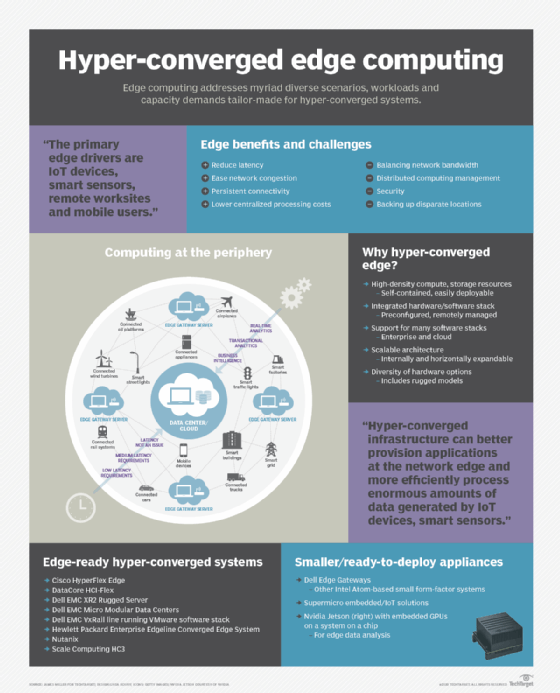Illustrated guide to hyper-converged edge computing
Hyper-converged systems can help reduce network strain by making it possible to send only the most valuable and relevant data to centralized remote data centers or the cloud.

Today's explosion of devices at the network edge has enterprises scrambling to find better, more effective ways to provision applications and process data at the periphery. Enter edge computing, which moves those functions at or near the data source, and hyper-converged edge computing technologies to enable it.
Gartner estimates 40% of larger enterprises will adopt edge computing as part of their IT infrastructure by 2025, up from 1% in 2017. This steep uptake is happening because centralized architectures simply won't do for transmitting such huge amounts of raw data for centralized processing and analysis in a timely, cost-effective manner.
Employing hyper-converged technologies is one method to relieve pressure on networks, which has not been lost on growing numbers of organizations. They find deploying compact and remotely manageable hyper-converged systems at or near the source -- e.g., IoT devices, smart sensors, remote worksites, mobile users, etc. -- does the heavy lifting where data is being generated.
Hyper-converged edge computing reduces network strain by making it possible to send only the most valuable and relevant data to the central remote data center or cloud. Utilizing hyper-convergence at the edge also makes data processing and analysis timelier.